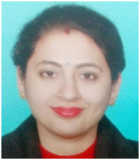Creation and Criticism
ISSN: 2455-9687
(A Quarterly International Peer-reviewed Refereed e-Journal
Devoted to English Language and Literature)
Vol.03, Joint Issue 08 & 09 : Jan-April 2018

Delineating Social Exclusion through the Narrative of Caste: A Reading of Bama’s Karukku
Shubhra
Abstract: Karukku is an exhaustive account of the unfavourable exclusion faced by Dalits, especially women in the caste-ridden Indian society. Coming from the pen of a disadvantaged individual in terms of caste, gender and social location; Karukku signifies both oppression and the counter voice of protest. It is the narrative recreation of the social exclusion faced by many like Bama under the hideous pretext of caste system. She takes her community as a prototype to analyse repression due to caste based social exclusion that had affected millions leaving them at the mercy of the advantaged few. Social exclusion involves those actions which prohibit people from having an equal access to resources in a society. It can operate through social interrelations and institutions which aid in propagating and justifying such deprivations. This paper analyses Karukku through the armature of social exclusion to unearth the meanings intended by Bama illuminating implications of caste-based deprivation.
Key words: Exclusion, caste, gender, repression, dalit, oppression.
Bama Faustina Soosairaj, popularly known as Bama, belongs to the rare group of Dalit women who have had the courage to express the plight of the doubly colonised and marginalized group of women. She has written three novels and two collections of short stories but her stature rests on the first autobiographical novel Karukku. The novel traces the sufferings and hardships faced by the group of Christian Dalit women in Tamil Nadu. Bama belongs to Christianity. It was her grandfather who converted from Hinduism to Christianity. Her writing aptly traces the discrimination and marginalization practiced by upper caste people.
Social exclusion is the process of depriving a section of the society from an equal access to social, economic and political functioning of the society. Karukku can be studied as an actual account of the caste based social exclusion which deprives untouchables in all walks of life. Karukku is a story of the life of an individual which symbolises the struggle of millions like her downgraded to the margin of the social setup and who have earned reluctantly the status of oppressed. This Autobiography is an attempt to reveal the oppressive structure and at the same time to overturn it to seek a free existence. As Lakshmi Holmstrom writes: “She captures a moment of paradox: she seeks an identity, but also a change which would end that identity” (Holmstrom, 24).
Karukku was first penned down in Tamil. The text under study is the English translation from Tamil by Lakshmi Holmstrom edited by Mini Krishnan. Made accessible to national and international readership in the translated version, Karukku has struck an emotional chord with the socially, economically and emotionally oppressed people worldwide. It is through its inherent questioning of the socially exclusive oppressive mechanisms that gives it universality.
Bama’s autobiography Karukku is analysed herewith with a purpose to unearth the mechanisms of social exclusion prevalent in the Dalit society of late twentieth century in India, both explicitly stated in the text and hidden beneath the Dalit native idiom of the language. For understanding the mechanics of caste based social exclusion penned down in detail in this autobiography it is necessary to understand the concept of social exclusion. Caste system which originated in ancient India as a strategy to control and check social distinctions has come a long way becoming more of an exclusive strategy than a controlling one. Rather than considering each section as a group identity owing to professional occupation, this system of social division has negatively evolved to consider social divisions as hierarchies subsequently excluding lower groups from the privileges of a decent living.
Disadvantage is the kernel of the phenomenon of social exclusion. It is the basic life condition of a group of people who owing to their abject poverty unwillingly get enveloped into other lacks and deprivations. Poverty is not only the absence of money but also an absence of means of respectable existence. Considered by some as synonymous to social exclusion, poverty is still considered to be an important instigator of social exclusion. Social Exclusion as theorised by sociologists is an ‘identity-based form of disadvantage’ where identity refers to grouping of people on the basis of cultural practises or social structuring. Caste in India is an appropriate example of identity here. These identity based divisions are used to first demarcate and then divide and finally devalue sections of people disadvantaged at birth.
In practice, the dominant sections of society construct and re-construct the members of these groups or categories as persons of lesser worth through beliefs, values, attitudes and behaviour which disparage, stigmatize, stereotype and discriminate (Thakur, 12).
Caste system which divides Indian society into hierarchies based on hereditary origin, cultural practises and occupations is an intricate web of oppression. Once a group is relegated the lower ends of the social pyramid other disadvantages of resources and opportunities become implicit. A Dalit belonging to the lowest rung of society is denied any socio-economic rights by the upper castes. Denied adequate labour returns, these disadvantaged groups are automatically ousted from the economics of a society. Inadequate wealth implies no land ownership which furthers the chance that these people remain stranded at the same spot of the social rubric. Caste originated as a hereditary system has attained socio-political and economic dimensions and has emerged as a potent agent of social exclusion in the hands of the powerful of the society.Existing scholarship on caste is paradoxical since the prevalent views labelling it as a system of consensual values is popularised owing to its suitability for the upper castes. These stand in complete contrast to Dalit scholarship like that of Ambedkar who unveil the real oppressive face of caste system in Indian society. (Chakravarti, 2013)
Reading and research of Dalit woman autobiography by default requires a study of caste. Caste is the identity; oppressive strategy and at the same time conflict for the oppressed. Exclusion in India is instrumental at the level of society which categorizes Indians into castes based on their hereditary origin. The divisions called castes owe their origin to Hindu mythological texts like Manusmriti where people born into groups earlier categorized as high and low based on traditional occupations hold true in present times as well. It is this exclusion which is pivotal in discrimination and deprivation of Dalits linked to the lowest rungs. Affiliation to a predefined social hierarchy divides people into groups having non uniform access to rights and facilities.
The most important feature of the caste system, however, is that it provides for a regulatory mechanism to enforce social and economic organisation through the instruments of social ostracism (or social and economic penalties), and reinforces it further with justification and support from philosophical elements in the Hindu religion. (Thorat, 2012)
Karukku, a life-narrative of a Dalit woman carries depictions of social exclusion faced by her and so many like her in this caste infected nation. She through her detailed account puts across a series of day to day incidents which project the social betrayal faced by Dalits in the name of caste system. Karukku is her journey through hardships both physical and emotional which impelled her into self-introspection and culminated in the resolution of the lifelong conflict between individual and society.
It grows out of a particular moment: a personal crisis and watershed in the author’s life which drives her to make sense of her life as woman, a Christian, and a Dalit. (Holmstrom, Introduction, 2012)
Impact of caste division on the lives of communities is explained by using her story as a representative. The use of a ‘pen name’ makes Karukku different from a conventional autobiography since it in addition to this fact also skips the minute details of names, places in the main narrative. What makes it an autobiography then is our knowledge of the origin of the pen name , chiselled out of the roman catholic version of the original name Fatima i.e. Bathima.
Karukku emerges primarily as an autobiography of a community as the images drawn are more of collective than personal. The references of exclusion can be traced from minute details of food availability and geographical location of the caste settlements. The text opens with a picturesque description of the writer’s village. Amidst the beautiful description of hills and streams are indicators like the people of lower communities were landless labourers in the fields of upper castes who owned lands named after them. The lives of landless agricultural labours were at the mercy of the privileged and when out of work they were bound to make the ends meet by doing menial tasks like fending and selling firewood. References to unequal access to facilities like water are indicative of the caste linked economic depravity. While the better-off castes owned wells and pump sets in their respective walled fields, lower communities depended for their water needs on a single water pump. This led to a skewed demand and supply leading to quarrels for a need as basic as water.
Word sketch of the rainy season filling up streams and rivers with abundant water and fish indicate their significance as food for people for whom Bama writes. The repetitive references of free natural availability of fish in rains and floods bespeak the otherwise scarcity of food for Dalits. The differences in the variety of fish consumed by upper and lower castes explicitly hint the difference in their economic ability. Limited economics limits them to the cheapest and inferior quality of food as they ‘couldn’t afford to pay that much for what they ate.’ (Bama, 3)
Closely analysing, one observes that the settlement is located at the farthest end of the village or to say outside the village since the bus stand is the entry to the main village. As such the village was divided into areas inhabited by upper and lower castes and movement was restricted to the respective communities. The location of civic amenities in the upper caste areas bespeaks the unequal access to socio-economic opportunities.
We only went their side if we had work to do there. But they never, ever, came to our parts. The post office, the panchayat board, the milk depot, the big shops, the church, the schools-all these stood in their streets. So why would they need to come to our area? Besides, there was a big school in the Naicker street which was meant only for the upper caste children.” (Bama, 7)
As a young child growing amongst untouchables of the Paraya caste, Bama recollects not explicitly hearing people talking about untouchability but experiencing it from close quarters. References of her being humiliated on account of being born to a Paraya household are found in plenty. Bama’s first encounter with untouchability occurred when she witnessed an incident involving a member of her community carrying food for an upper caste man. Naicker, the upper caste man seated above the Parayas on a stone platform was supervising the hard physical labour of the Parayas, when a Paraya carrying food for the Naicker arrives. The incident which is at first amusing for the little girl because of the peculiar way the food was carried by its string avoiding any contact with the hand later becomes a cause of infuriation on understanding the reason behind the act. She felt terribly sad on being told by her brother that the upper castes believed that any kind of physical contact with the lower castes polluted them. Bama was appalled by the fact that mere accumulation of a little wealth and social status deprived people of human feelings. Bama was ashamed of the fact that her grandmothers worked as servants in the upper caste households. The way Naicker children called them by first names while they used ‘master’ for them were humiliating for her. It was demeaning to see water being served from a height of four feet into the cupped hands of her elders avoiding any contact with them. She was witness to the common life activities of her community elders who did menial tasks of sweeping, washing cowsheds and courtyards while receiving in return stale left-overs thrown to them from a distance by the privileged.
When Bama questioned this insulting behaviour meted out to her grandmother, she was surprised by the reply she received. She observed the internalisation of the humiliation by the people of her caste.
These people are the maharajas who feed us our rice. Without them, how will we survive? Haven’t they been upper caste from generation to generation, and haven’t we been lower caste? Can we change this?” (Bama, 17)
This was said of the rice which was thrown to the lady’s vessel placed near the drain of the owner’s house.
Differential treatment in school was a source of resentment amongst Dalit children. Incidents involving separating of Dalit children in front of all students in assembly or class to list their names and highlighting them as scheduled castes for special tuitions are recounted in this autobiography. How this segregation instigated contempt in fellow students disturbed Bama.
We’d stand in front of nearly two thousand children, hanging our heads in shame, as if we had done something wrong. Yes it was humiliating. (Bama, 21)
Further Bama exposes the hypocrisy in education and employment by narrating her life experiences as a teacher in convent. On an honest acknowledgment of her Parayar origin, the writer recalls the detestable expression of her fellow workers. Her tenure as a teacher was an ordeal involving facing and overcoming casteist bias towards her and Dalit students studying in that school. She entered the religious order and became a nun with a hope that she could uplift her kind by being a part of the system.
It struck me overwhelmingly that these nuns collectively oppressed Dalit children and teachers so very much; why should I not become a nun too and truly help these people who are humiliated so much and kept under strict control?” (Bama, 23)
Dalits converted to Christianity since it “appeared to offer liberation from social and spiritual marginalisation.” (Christopher, 9) But in fact the Christianity popularised as unbiased was a distant reality for Indian converts. On reaching the convent she discovered the inhuman exploitation of her people who were restricted to performing petty chores like ‘sweeping, swabbing and washing the classrooms and cleaning the lavatories’ (Bama, 25). Bama was distraught after discovering that even in a religious order which promised equality and justness, caste was an embedded stigma. A humiliated and degraded life and an insignificant death is the fate of an untouchable. Bama’s frustration on her struggle as a Dalit finds expression in the expression which signifies the suffering of millions crippled by caste.
Wherever you look, however much you study, whatever you take up, caste discrimination stalks us in every nook and corner and drives us into a frenzy. It is because of this that we are unable to find a way to study well and progress like everyone else. And this is why a wretched lifestyle is all that is left to us. If you are born into a low caste, every moment of your life is a moment of struggle. (Bama, 26-27)
She calls upon Dalits to awaken and protest against the injustices meted out to them. She dares them to question their subhuman treatment and also states that it will be difficult to free themselves from the clutches of the exploiters. Karukku is an attempt to resist the intentional divisions in society and a demonstration of the understanding that all humans are equal and everyone has a right to a respectful existence. It is an attempt to release the subject from the eternal subjugation.
This, through this narrative of caste based social exclusion; Bama makes a statement of resistance against the embedded caste reality in Indian society. The movement of the narrative from suffering to resistance makes it a writing of protest. Progressive self-awareness on the part of the writer makes her aware of the potential of her community to overthrow the caste bias and free themselves from the shackles of social exclusion. The achievement of Karukku lies in its power to encourage and inspire Dalits to throw away the garb of helplessness and initiate efforts towards a life of hope sufficiency and dignity.
Works Cited:
Bama. Karukku. Trans. Lakshmi Holmstrom. New Delhi: Oxford University Press, 2012. Print.
Chakravarti, Uma. Gendering Caste Through a Feminist Lens. Calcutta: STREE- an imprint of Bhatkal and Sen, 2013.
Christopher, K. W. "Between Two Worlds: The Predicament of Dalit Christians in Bama's Works." The Journal of Commonwealth Literature, 47.1, 2012. Print.
Holmstrom, Lakshmi. "A Literature of Resistance Autobiography and fiction of Bama a Tamil Dalit Woman." Nivedini-Journal of Gender Studies, 11, 2004. Print.
Holmstrom, Lakshmi. "Introduction." Bama. Karukku. New Delhi: OUP, 2012. xv-xxiv.
Thakur, Sheetal. "Issue of Social Inclusion and Exclusion of Indian Tribes." International Journal on Arts, Management and Humanities, 1(1), 2012.
Thorat, Sukhadeo and Nidhi Sidana Sabharwal. Children, Social Exclusion and Development. Working Paper Series. IIDS. New Delhi: Indian Institute Of Dalit Studies, 2010.
About the Author:
Born in the January of 1988, Shubhra is a full time research scholar pursuing PhD in English Literature at Department of Humanities and Management, Dr B.R. Ambedkar NIT, Jalandhar. She is a postgraduate from the Department of English and Cultural Studies, Punjab University Chandigarh. Her area of research is Dalit Studies with special focus on women issues. She can be contacted through her e-mail: shubhrabajaj.nitj@gmail.com.
.


